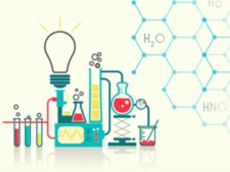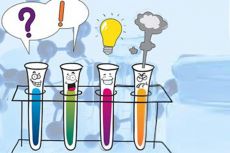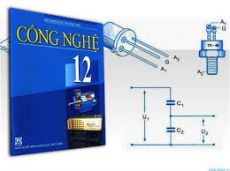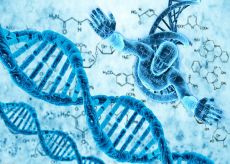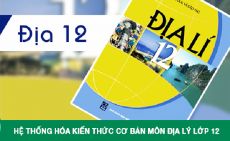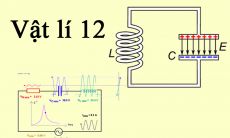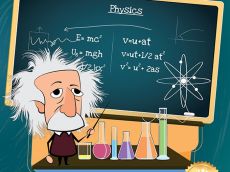Read the following passage and mark the letter A, B, C, or D on your answer sheet to indicate the correct answer to each of the questions from 36 to 42.
The geology of the Earth's surface is dominated by the particular properties of water. Present on Earth in solid, liquid, and gaseous states, water is exceptionally reactive. It dissolves, transports, and precipitates many chemical compounds and is constantly modifying the face of the Earth.
Evaporated from the oceans, water vapor forms clouds, some of which are transported by wind over the continents. Condensation from the clouds provides the essential agent of continental erosion: rain. Precipitated onto the ground, the water trickles down to form brooks, streams, and rivers, constituting what are called the hydrographic network. This immense polarized network channels the water toward a single receptacle: an ocean. Gravity dominates this entire step in the cycle because water tends to minimize its potential energy by running from high altitudes toward the reference point, that is, sea level.
The rate at which a molecule of water passes though the cycle is not random but is a measure of the relative size of the various reservoirs. If we define residence time as the average time for a water molecule to pass through one of the three reservoirs - atmosphere, continent, and ocean - we see that the times are very different. A water molecule stays, on average, eleven days in the atmosphere, one hundred years on a continent and forty thousand years in the ocean. This last figure shows the importance of the ocean as the principal reservoir of the hydrosphere but also the rapidity of water transport on the continents.
A vast chemical separation process takes places during the flow of water over the continents. Soluble ions such as calcium, sodium, potassium, and some magnesium are dissolved and transported. Insoluble ions such as aluminum, iron, and silicon stay where they are and form the thin, fertile skin of soil on which vegetation can grow. Sometimes soils are destroyed and transported mechanically during flooding. The erosion of the continents thus results from two closely linked and interdependent processes, chemical erosion and mechanical erosion. Their respective interactions and efficiency depend on different factors.
Câu 36 : The word "which” in paragraph 2 refers to_____________.
Suy nghĩ và trả lời câu hỏi trước khi xem đáp án
Lời giải:
Báo saiĐáp án A
Thông tin trong bài: "Evaporated from the oceans, water vapor forms clouds, some of which are transported by wind over the continents." (Bốc hơi từ các đại dương, hơi nước tạo thành mây, một sô'được gió mang qua các lục địa.)
=> which = clouds
Câu 37 : According to the passage, clouds are primarily formed by water_____________.
Suy nghĩ và trả lời câu hỏi trước khi xem đáp án
Lời giải:
Báo saiĐáp án C
Theo bài đọc, mây chủ yếu được hình thành bằng cách nước_____________.
A. kết tủa trên mặt đất B. chuyển từ trạng thái rắn sang lỏng
C. bốc hơi từ đại dương D. bị gió cuốn theo
Thông tin trong bài: "Evaporated from the oceans, water vapor forms clouds, some of which are transported by wind over the continents." (Bốc hơi từ các đại dương, hơi nước tạo thành mây, một số được gió mang qua các lục địa.)
Câu 38 : The passage suggests that the purpose of the "hydrographic network" is to_____________
Suy nghĩ và trả lời câu hỏi trước khi xem đáp án
Lời giải:
Báo saiĐáp án C
Bài đọc gợi ý rằng mục đích của "mạng lưới thủy văn" là để____________.
A. xác định kích thước của phân tử nước
B. ngăn chặn xói mòn đất do lũ lụt
C. dẫn nước từ bề mặt Trái đất đến các đại dương
D. điều chỉnh tốc độ dòng nước từ sông suối
Thông tin trong bài: "This immense polarized network channels the water toward a single receptacle: an ocean." (Mạng lưới phân cực rộng lớn này dẫn nước về một nơi chứa duy nhất: đại dương.)
Câu 39 : What determines the rate at which a molecule of water moves through the cycle, as discussed in the third paragraph?
Suy nghĩ và trả lời câu hỏi trước khi xem đáp án
Lời giải:
Báo saiĐáp án D
Điều gì xác định tốc độ một phân tử nước di chuyển trong chu kỳ, như đã thảo luận trong đoạn thứ ba?
A. Thế năng chứa trong nước
B. Ảnh hưởng của áp suất khí quyển đến các hợp chất hóa học
C. Lượng mưa rơi xuống các lục địa
D. Kích thước tương đối của các khu vực chứa nước
Thông tin trong bài: "The rate at which a molecule of water passes though the cycle is not random but is a measure of the relative size of the various reservoirs." (Tốc độ mà một phân tử nước di chuyển trong chu kỳ không phải là ngẫu nhiên mà là phạm vi kích thước tương đổi của các hồ chứa khác nhau.)
Câu 40 : The word "rapidity'' in paragraph 3 is closest in meaning to_____________.
Suy nghĩ và trả lời câu hỏi trước khi xem đáp án
Lời giải:
Báo saiĐáp án C
- rapidity ~ swiftness: sự nhanh, sự mau lẹ - significance: sự quan trọng, ý nghĩa
- method: phương pháp - reliability: sự đáng tin cậy
Thông tin trong bài: "This last figure shows the importance of the ocean as the principal reservoir of the hydrosphere but also the rapidity of water transport on the continents." (Con số cuối cùng cho thấy tầm quan trọng của đại dương như là hồ chứa chính của thủy quyển cũng như tốc độ vận chuyển nước nhanh chóng trên các lục địa.)
Câu 41 : The word "they" in the last paragraph refers to_____________.
Suy nghĩ và trả lời câu hỏi trước khi xem đáp án
Lời giải:
Báo saiĐáp án A
Thông tin trong bài: "Insoluble ions such as aluminum, iron, and silicon stay where they are and form the thin, fertile skin of soil on which vegetation can grow." (Các ion không hòa tan như nhôm, sắt và Silicon ở lại vị trí của chúng và tạo thành lớp đất mỏng và màu mỡ mà trên đó thực vật có thể phát triển)
=> they = Insoluble ions
Câu 42 : All of the following are example of soluble ions EXCEPT_____________.
Suy nghĩ và trả lời câu hỏi trước khi xem đáp án
Lời giải:
Báo saiĐáp án B
Thông tin trong bài: "Soluble ions such as calcium, "sodium", potassium, and some magnesium are dissolved and transported." (Các ion hòa tan nhưcanxi, natri, kali, và một sốmagiê được hòa tan và vận chuyển.)
Đề thi thử THPT QG năm 2021 môn Tiếng Anh
Trường THPT Xuân Diệu Lần 2
